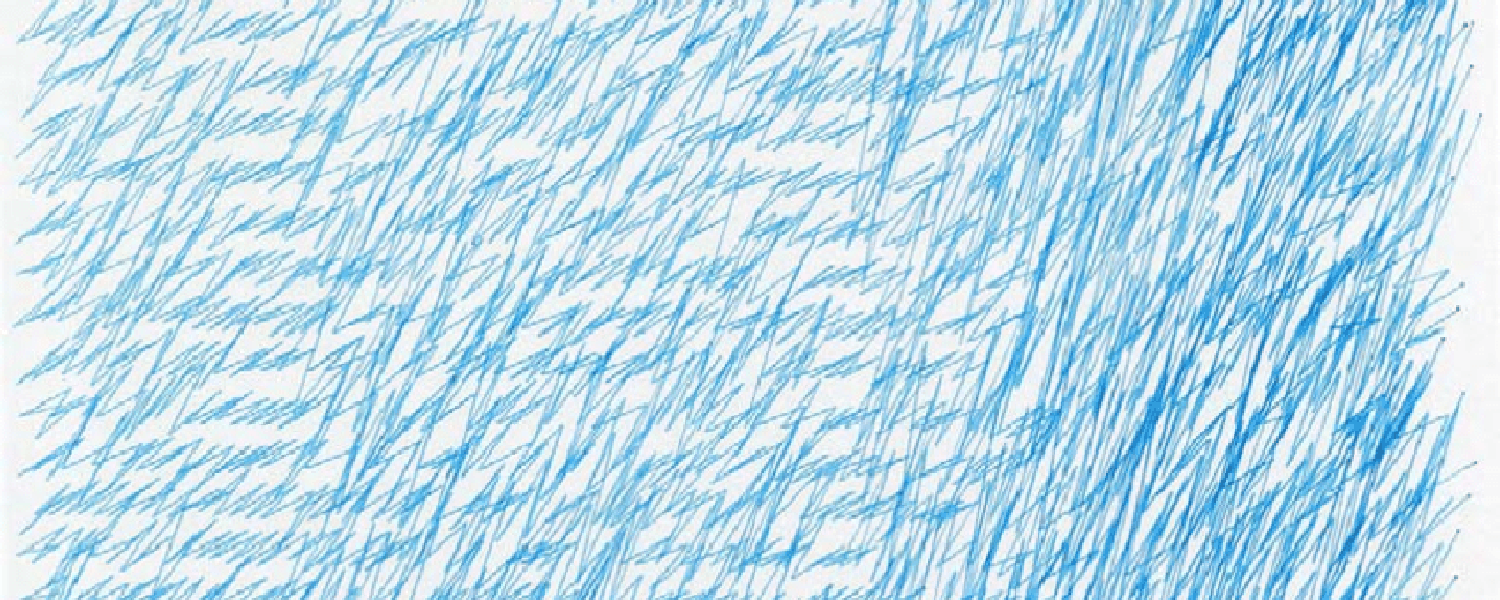"The idea becomes a machine that makes the art." – Sol LeWitt
"Then I made a superb dive into the human conscience, that I have infested with strange chances, formless flowers, and cries of marvels." – André Breton
Arp's idea of chance is in collaboration with the physical world: tiny air currents, the shape of the torn paper pieces, collision and friction. But many artists looked for more systematic ways of incorporating chance in their work. Together, we'll make some drawings using seemingly simple instructions that create complex, unexpected results. The first few are inspired by Zack Lieberman.
(Normally, we'd do these on paper in a room together, but Zoom offers some cool opportunities for drawing together too!)
In all of these, it's best not to think too much, just make marks quickly and see what results from the accumulation!
Above: a detail of Vera Molnar's "Letters from My Mother" from 1988, which uses code to approximate the increasingly disordered handwriting in her mother's letters
Here are the instructions we'll try together (using the PDF in the Resources folder)...
DOTS
- Draw a dot in a point that is as far from the other dots as possible
- Repeat many times and as quickly as possible
LINES
- Draw a single, straight line somewhere on the page
- From the end of an existing line, draw a straight line of any length and angle
- Add a new straight line somewhere else on the page
- No line should touch any other lines
- Repeat
BLOBS
- Draw a blob (random, round-ish shape) of any size
- Continue drawing blobs that intersect with exactly one blob but doesn't touch any others
- Repeat
CURVES
- Draw a curving line from the edge of the paper inwards
- Continue drawing similar curves from the edge inward
- No lines should touch
- Repeat
LINES IN SQUARES
Modified version of Sol LeWitt's Work From Instructions (1971):
- Within each one inch square...
- Draw nothing, or...
- Draw a diagonal straight line from corner to corner, or...
- Draw two crossing straight lines diagonally from corner to corner
- Repeat across entire grid
POINTS ON TYPE
Next, you'll write your own instructions for something to do with a set of points:
- On a piece of scratch paper (or your computer), write down a set of simple instructions that can be carried out on a set of points
- When ready, start carrying out your instructions using the points provided
- It's totally ok if you get lost while others are drawing – embrace the chaos!
